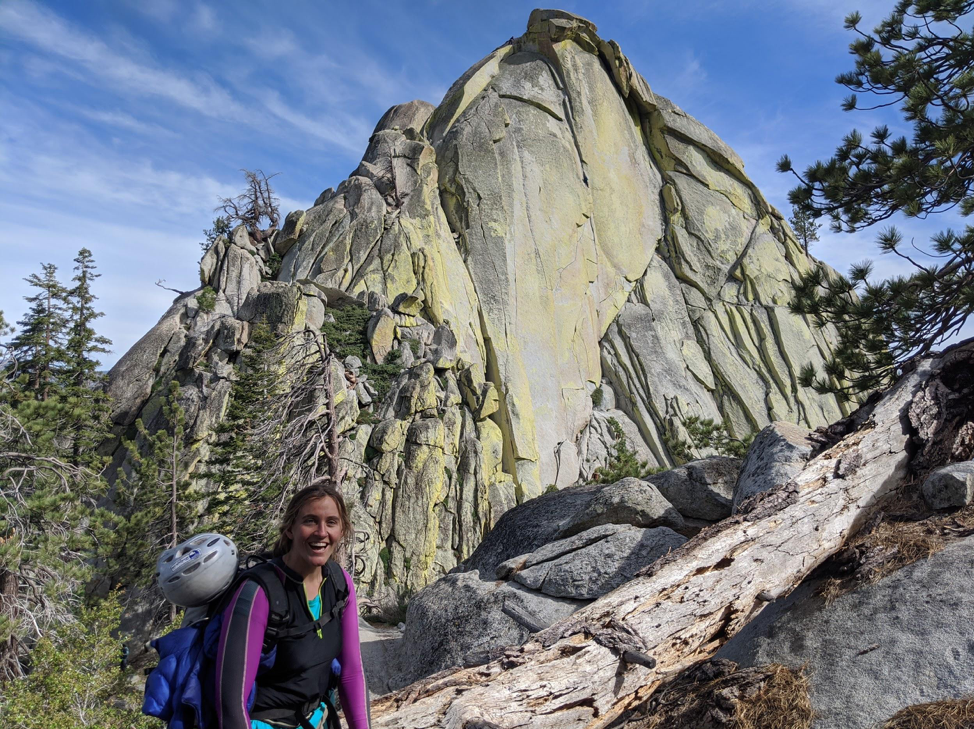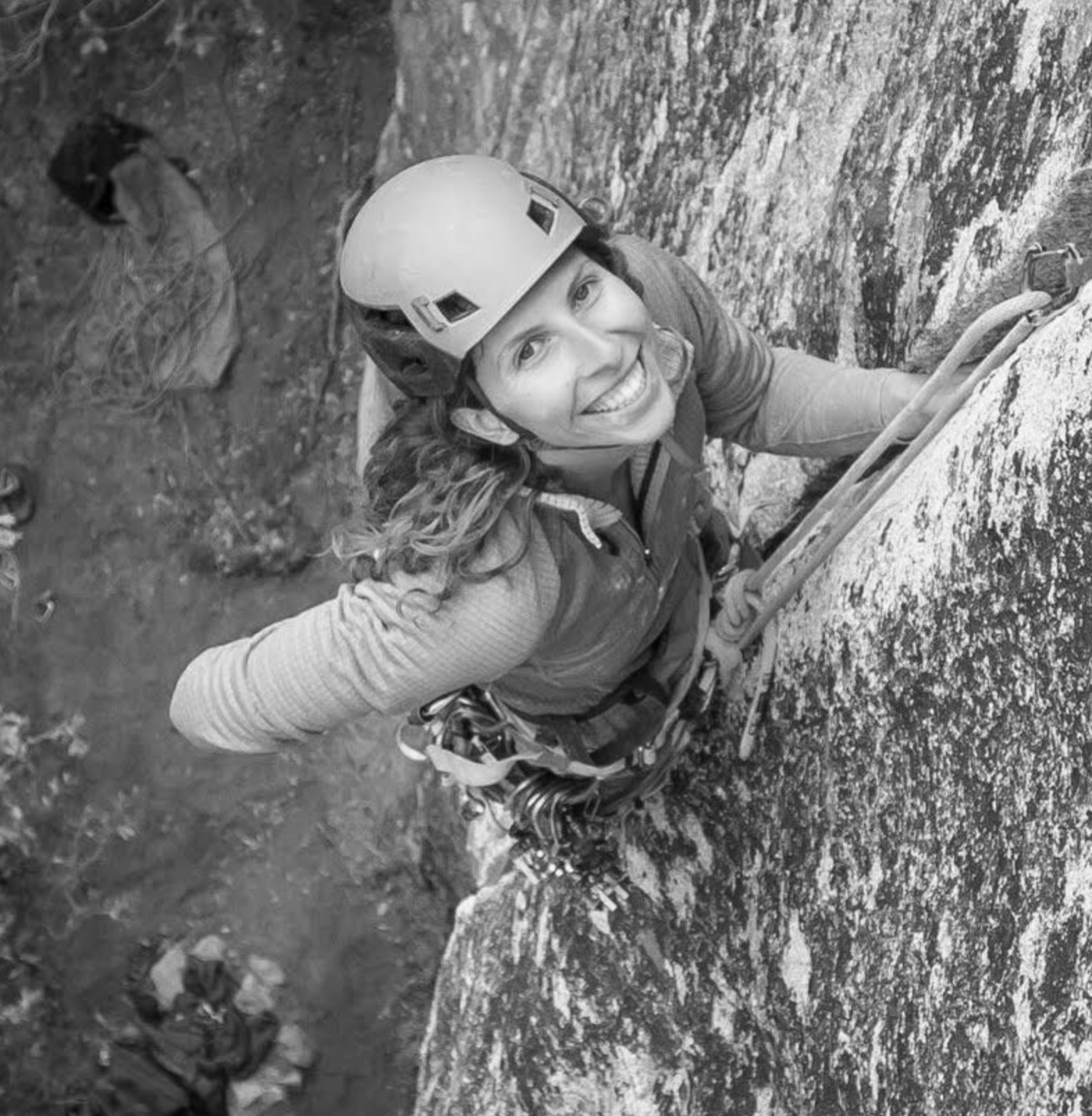2020 has been all about staying home, but it’s never too early to start planning your dream climbing road trip. I had to cancel my spring and fall climbing trips, which gave me plenty of time to scheme up the dreamy, year-long road trip I’ll be taking once all of this settles down, and I wanted to share it.
The western United States is stacked with some of the best climbing destinations in the world, and the geographic diversity of the region means there are climbing areas in season year-round. The following guide outlines what I have deemed the perfect way to travel around the west for one year of bucket list climbing. These seven spots vary greatly in rock type, climbing style, and general vibe, which keeps things interesting and ensures you’ll be a well-rounded climber in addition to a well-traveled one by the end of this circuit.
Be forewarned: Every destination on this list is a world-class climbing area and worth a trip on it’s own, so visiting them consecutively and for extended periods might just lead to the best year of your life.
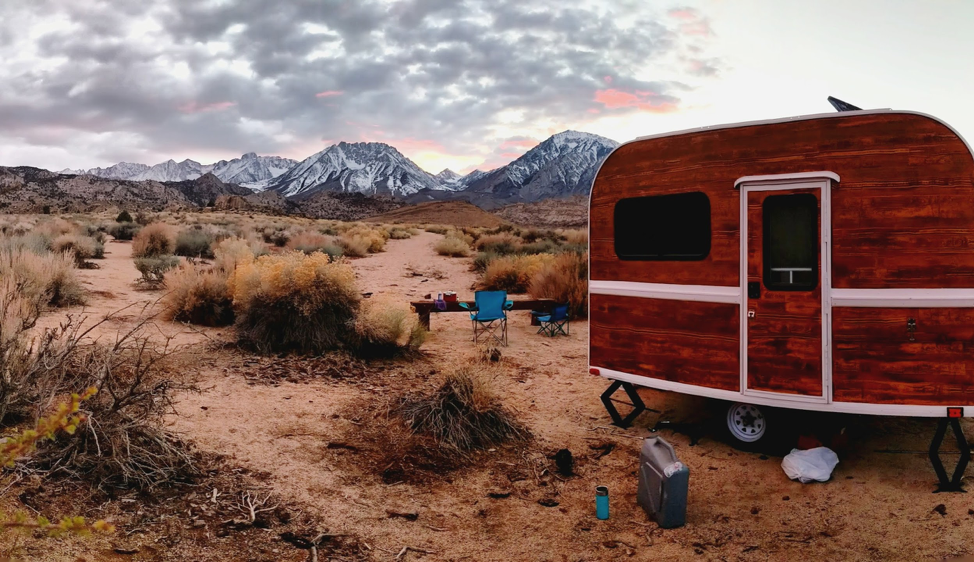
The author’s glamping rig parked near The Buttermilks in Bishop, CA
Winter
1. Joshua Tree, CA
Season: Late fall to early spring
Rock Type: Quartz Monzonite in the form of huge, grainy, granitic boulders.
Climbing Style: Traditional, bouldering, run-out slab, some face climbing.
Winter is the perfect season to start your climbing road trip, and there’s no better place to start than in the strange desert land of Joshua Tree. Known for its short, sketchy, sandbagged routes, J-tree is the destination to get your head game in order. Many climbers go to Joshua Tree for the hang more than the climbing, and there’s quite a dirtbag scene in Hidden Valley Campground each winter. Easy solo circuits are popular here, and it’s easy to scramble up ten routes before breakfast once you get to know the campground. Make sure to stop in at climbers coffee every Saturday and Sunday morning at Hidden Valley for all the beta.
2. Red Rock Canyon, NV
Season: Late fall to early spring
Rock Type: Sandstone
Climbing Style: Sport, multi-pitch trad/mixed, bouldering.
After a humbling stay in Joshua Tree, drive northeast to the strange desert metropolis that is Las Vegas, Nevada. Then keep driving fifteen miles out of town to Red Rock Canyon National Conservation Area. Red Rock offers tons of climbing of all types: Sport climbing from 5.4 to 5.14, thousand foot routes with a mixture of crack and face climbing, and hundreds of fun boulder problems. There’s climbing five minutes from the car or remote routes with long approaches and descents. The sandstone formations feel like a climber’s playground, and the vicinity to Las Vegas offers unique views and easy access to cheap food and services that are usually tough to come by on the road. The main drawback to Red Rock is the camping situation: There’s only one campground nearby and it can be hard to get in without a reservation, so try to book ahead if you can.
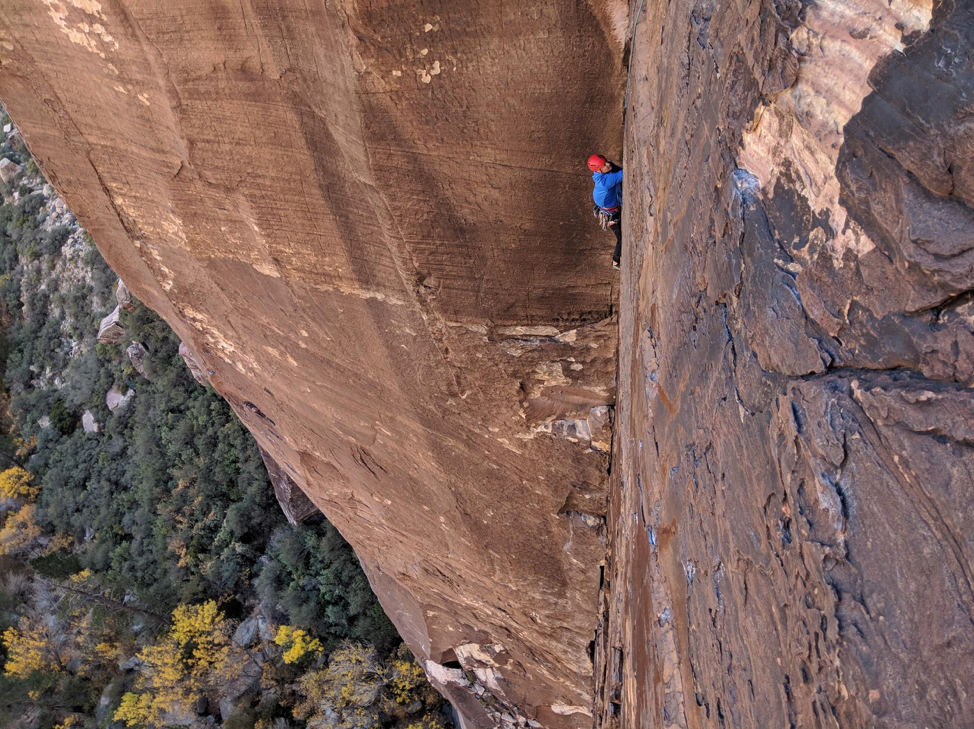
Dark Shadows, 5.8 in Red Rock, NV
3. Bishop, CA
Season: Late Fall to early Spring (or year-round up higher)
Rock Type: Bishop Tuff, Quartz Monzonite, Granite
Climbing Style: Steep Sport, Bouldering, Some Trad
Bishop will be a breath of fresh air after a long stay in Red Rock Canyon. The town itself is quaint and the views are unparalleled as it sits right on the divide between the Great Basin and the eastern slope of the Sierra Nevada, and there’s ample free dispersed camping in the area. North of town the Owens River Gorge is California’s most concentrated sport crag, offering hundreds of, fun, steep sport climbs. Closer to town the Buttermilks (granitic) and the Tablelands (volcanic) are packed with enough boulder problems to keep you busy for years. Bishop sits at 4,000 feet which makes it the perfect winter climbing destination, but a 20-minute drive can get you to almost 10,000 feet, which means that if you head for the hills you can climb here year-round.
Note: Nobody knows when things will calm down enough to embark on a trip of this nature. I’ve chosen to start the trip in winter since that’s what’s coming up, but you can jump on the circuit at any time of year.
Spring
4. The Needles, CA
Season: Spring, fall
Rock Type: Granite Spires
Climbing Style: Multi-pitch trad, some face
The Needles boasts some of the best granite in the West, and maybe even in the world. It’s also slightly off the beaten path as far as California climbing destinations go, which makes it ideal for a long stay. The camping is free and easy (although the final dirt road can get a little hairy some years) and it’s rarely crowded. Most of the lichen-covered spires can be summited in around three pitches, so it’s easy to link up tons of classic routes in a single day. The three mile approach and sandbagged traditional routes generally keep the yahoos away while ensuring rewarding days with just the right mix of fear and fun.
Happy climber in the Needles, CA
5. Indian Creek, UT
Season: Spring, Fall
Rock Type: Sandstone
Climbing Style: Pure, single-pitch crack climbing, adventurous desert towers
Indian Creek is the dirtbag climber’s paradise and the best place to hone your crack climbing skills. 5.10 is the easiest grade, and the lack of face holds means that the only way to ascend these splitters is with good crack technique. The mix of cheap, developed camping and free, dispersed camping means there’s something for everyone, and the vast desert is jam-packed with incredibly perfect cracks of all sizes. The pitches are long, the rack must be huge, and the hang at Creek Pasture Campground is all-time. Don’t budget less than three weeks for your first trip to the creek or I promise you’ll regret it.
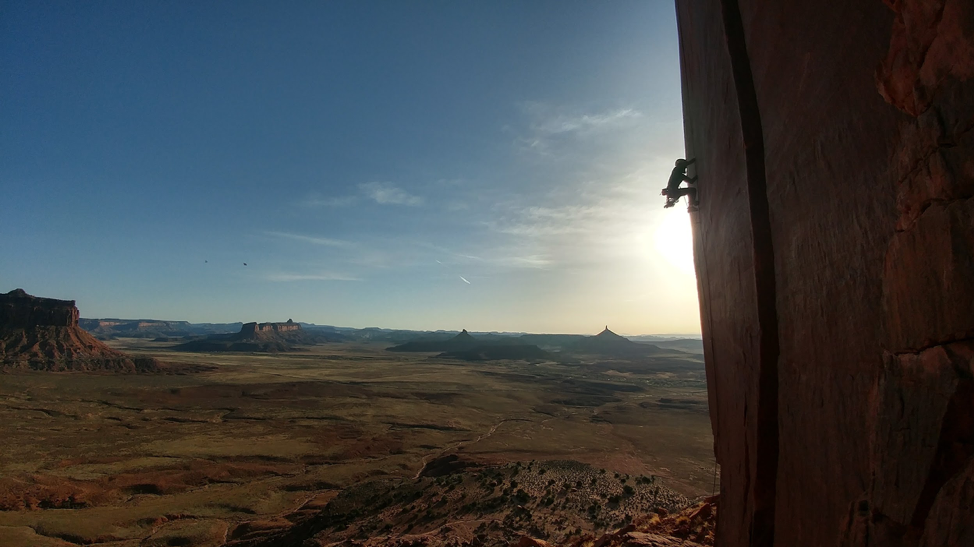
Climbing splitters in Indian Creek, UT
Summer
6. The High Sierra, CA
Season: Summer
Rock Type: Granite, some volcanic
Climbing Style: Multi-pitch Trad, Slab
A long stay in Indian Creek is the perfect way to get in shape for a summer in the High Sierra. The start of the High Sierra season varies greatly depending on the snowpack, and wet years are often followed by extreme mosquito seasons, but the quality and quantity of the climbing makes this the ideal summer spot. The Eastern Sierra is home to classic formations like The Hulk, Mt. Whitney, Temple Crag, and dozens of others worth visiting. Peter Croft’s guidebook The Good, the Great, and the Awesome offers the best insights on the area. If you tire of long routes in the steep east-side mountains, head to Tuolumne Meadows, inside Yosemite National Park, for incredible dome climbing, easy link-ups, and lots of heady, run-out slab climbs. Since the High Sierra is so vast, there isn’t a centralized climbing scene like you’ll find in many of the other destinations on this list. This makes it harder to make friends or meet partners, but there are plenty of climbers around if you know where to look.

West Face of Cardinal Pinnacle, 5.10a, near Bishop, CA
Fall
7. Yosemite Valley
Season: Spring, Fall
Rock Type: Granite
Climbing Style: Trad, Big Wall/aid, bouldering, some sport.
Yosemite Valley will always hold my heart, so maybe I’m biased to say it’s the ultimate American climbing destination. El Capitan’s 3,600 foot face inspires awe in every climber, and the dozens of other towering granite walls are almost equally mind blowing. Camping and logistics can be tough as it’s one of the most visited parks in the nation, but once you get a feel for the valley it’s easy to look past the tourists as everything feels slightly magical in this majestic valley. Yosemite Valley is best known for its big walls, but there are also tons of boulders, crags, and classic multi-pitch trad climbs. Fall is the most popular climbing season in the valley, but it’s just as magical in the springtime when the waterfalls are raging and there are fewer people around(although many of the climbs seep in the spring, adding some excitement!)
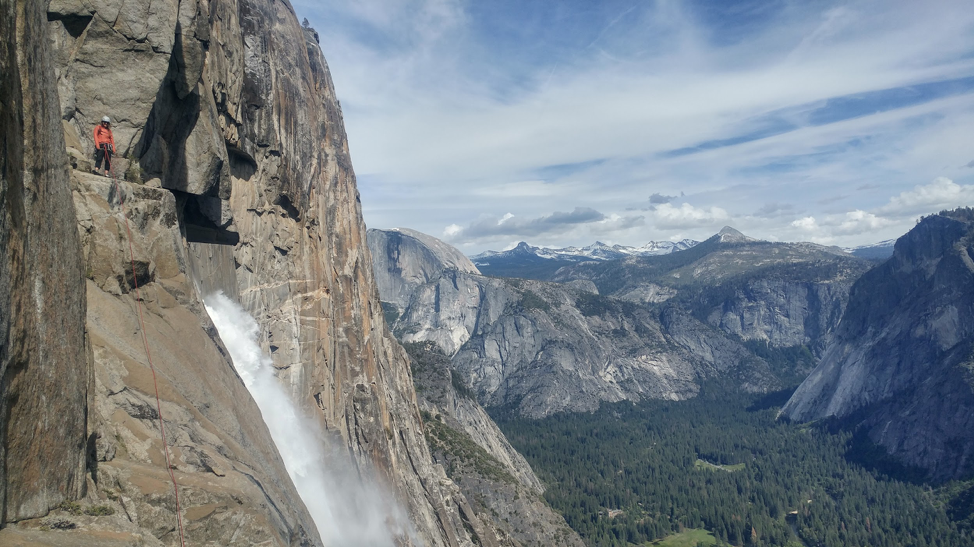
Miya on Via Aqua, an adventurous route that leads to the top of Yosemite Falls
Other Spots to Check Out
These seven destinations will give you a sampling of some of the best climbing in the West, but there are plenty of other spots to check out in between if you actually manage to spend an entire year on the road. Here are a few more to consider:
Squamish, Canada (not technically in the American West, but close enough to the border that you might want to check it out)
Index, WA
Leavenworth, WA
Smith Rocks, OR
City of Rocks, ID
Tahoe area, CA (Donner Summit, Lover’s Leap, and more)
Alabama Hills, CA
Idyllwild, CA
Cochise Stronghold, AZ
Flagstaff area, AZ
Zion, UT
Road Trip Tips
As you travel from crag to crag, don’t forget to look into the ethics and regulations for each area. If you haven’t done your research ahead of time, make sure to stop in at the local climbing shop on your way into town to ask for info or grab a guidebook to read up on the rules. Be kind and have fun are the two rules I can count on anywhere I go, and if you keep those in mind you’ll be in for the climbing road trip of your dreams!
About the author
Alison Kaplan
___________________________
Alison is a California-based climber, environmentalist, and freelance writer. She's currently hunkered down on the coast working on ecological restoration, writing, and planning her next big trip. Feel free to reach out with any questions to:
alisonkkaplan@gmail.com.


















